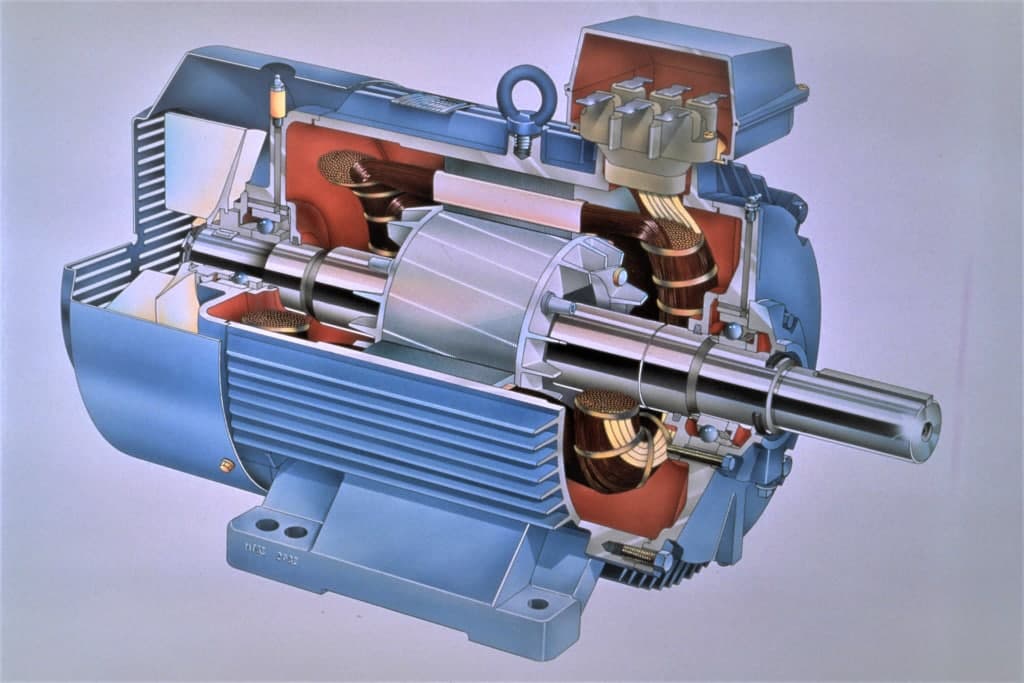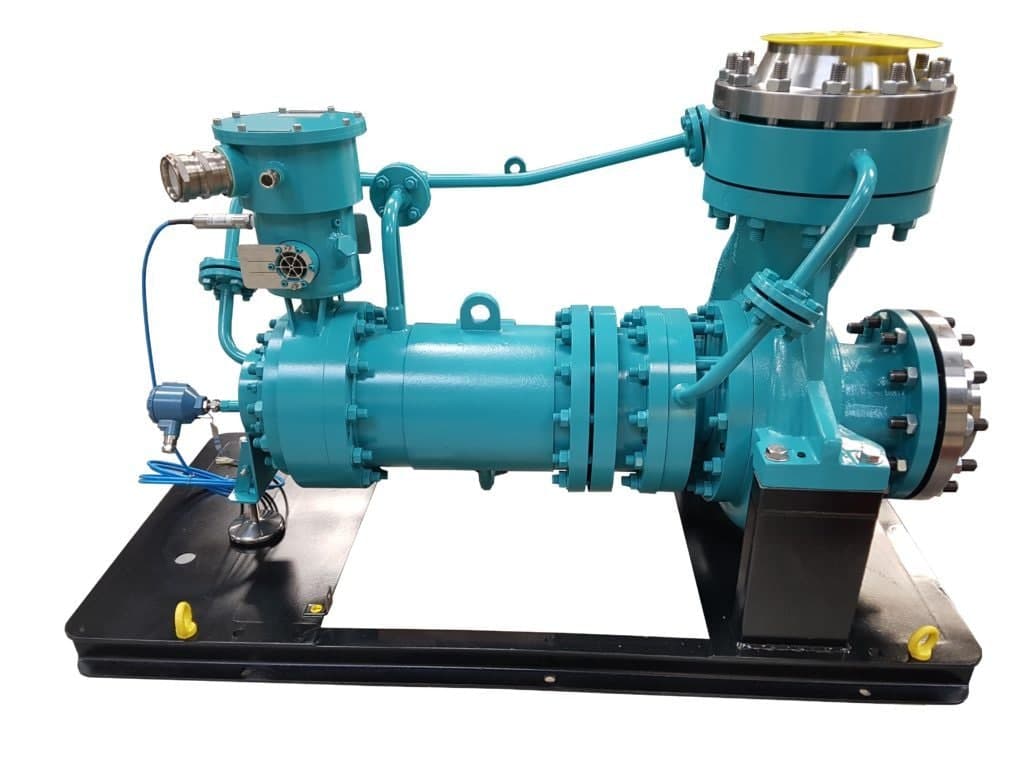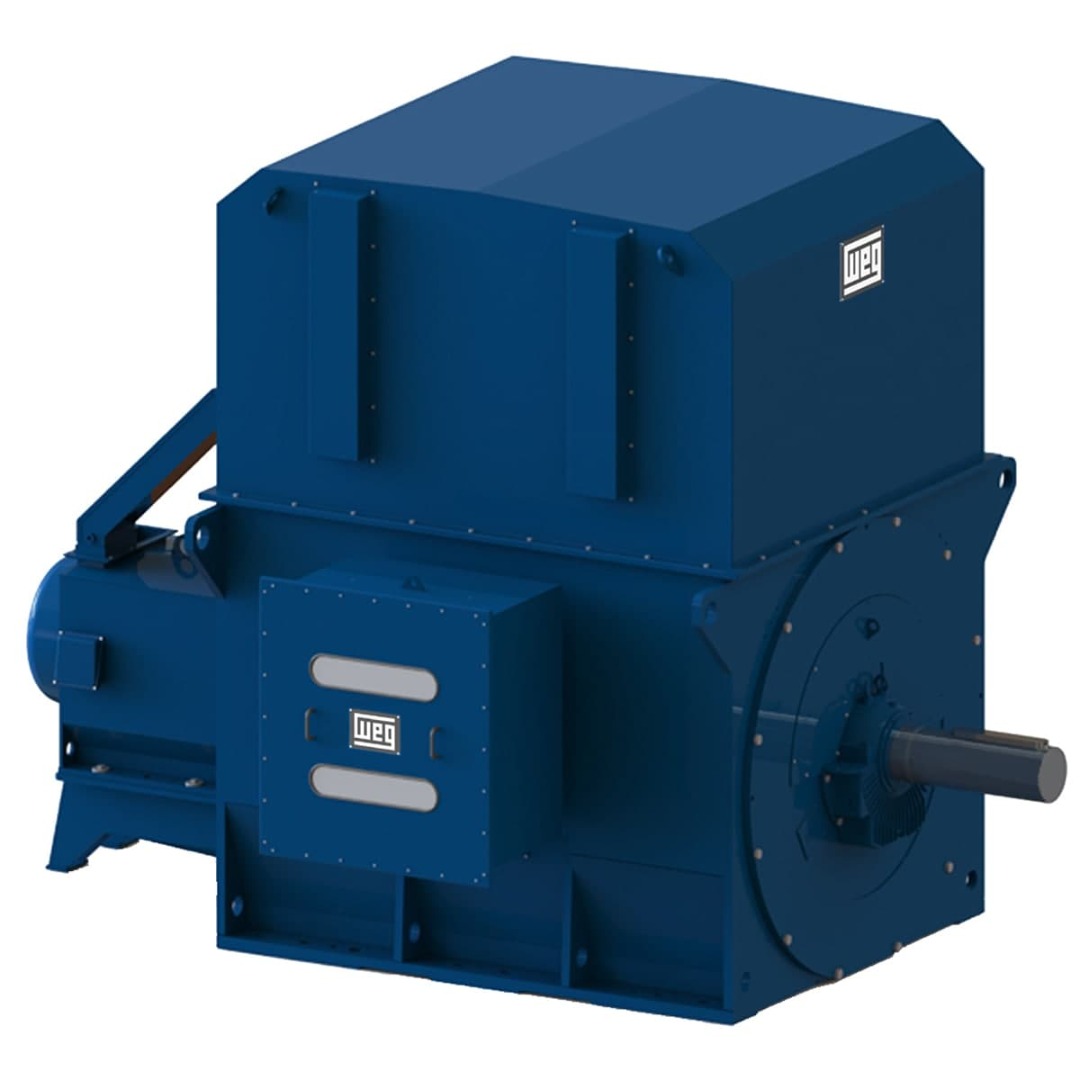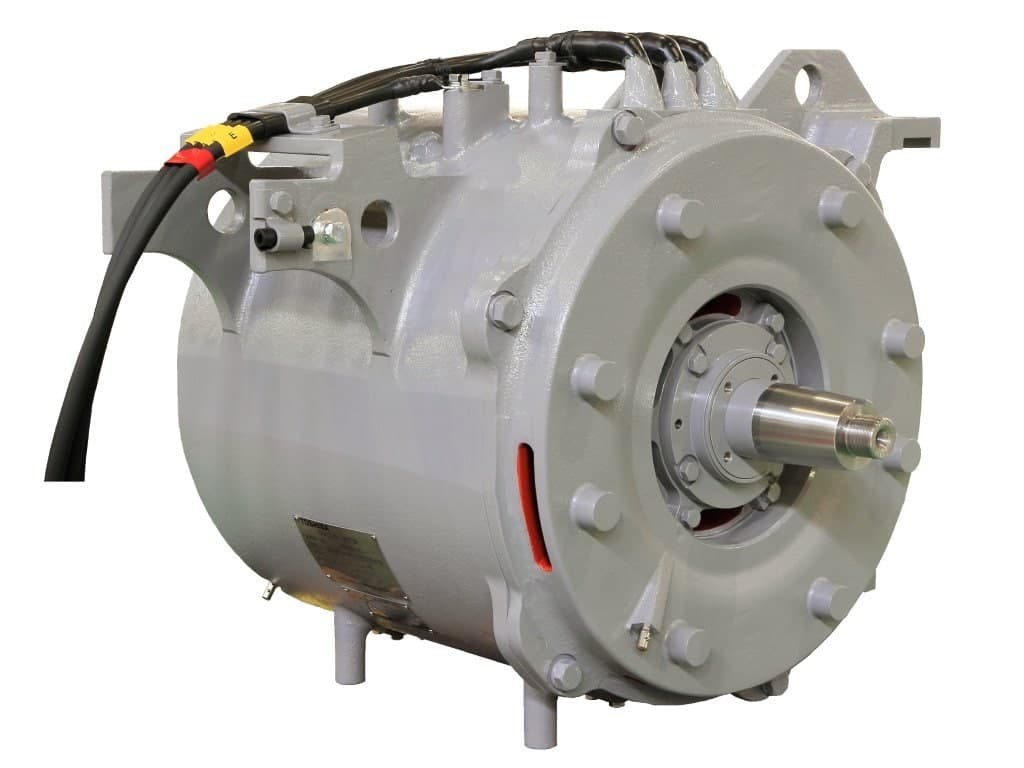Welcome to Linquip Blog. Today and in this article, we are going to talk about synchronous motors and why a synchronous motor is not self-starting. First of all, we deliver a simple definition of synchronous motors to get you accustomed to the nature of this electrical device. Then we will move to the construction of synchronous motors and talk about the role of each part of them. After finally, we will discuss the working principle of synchronous motors. All of these details are for a better understanding of this device and a kind of preparation to why synchronous motors are not self-starting.
The spinning of the rotor (or shaft) of a synchronous motor (short for the synchronous electric motor) is synchronized with the frequency of the supply current. That is, the rotor’s rotation period is the same as the rotating field of the machine it is contained within. Synchronous Motors are available from a variety of Suppliers and Companies, as well as various manufacturers and distributors, and there are many Synchronous Motors for Sale on Linquip.
There is a comprehensive list of synchronous motor services on the Linquip website that covers all OEM fleets. Linquip vendors can assist you with this. Please call Synchronous Motor Experts in Linquip to learn more about how to connect with a diverse network of service providers who consistently deliver high-quality products.
Our team gathered all of the necessary information on this topic to minimize the need for reading diverse content on other websites. Stay with us until the end to find the answer to your question on this topic.
⇒ View a List of Synchronous Motor for Sale and Their Suppliers ⇐
What is a Synchronous Generator?
Electrical motors are an electro-mechanical device that converts electrical energy to mechanical energy. Based on the type of input they have been classified into single phase and three phase motors. The most common type of three phase motors are synchronous motors and induction motors. When three-phase electric conductors are placed in certain geometrical positions, meaning in a certain angle from one another, an electrical field is generated. The rotating magnetic field rotates at a certain speed known as the synchronous speed.
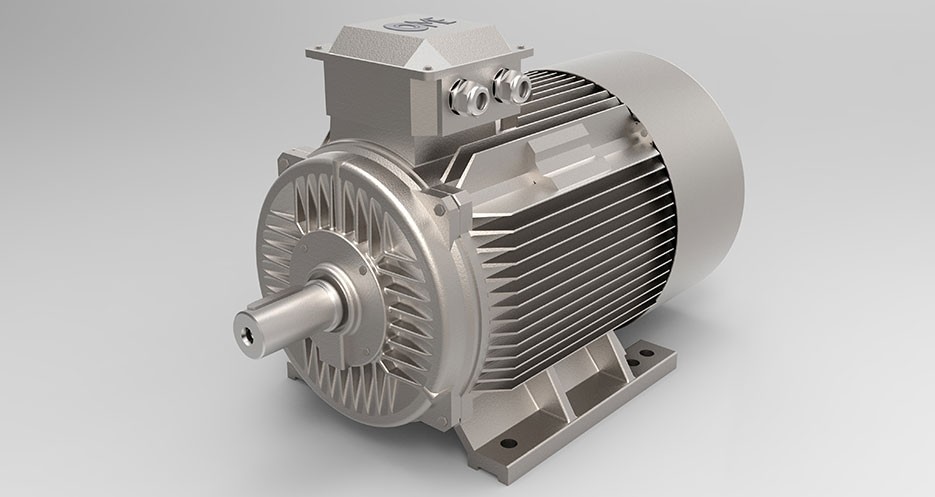
If an electromagnet is present in this rotating magnetic field, the electromagnet is magnetically locked with this rotating magnetic field and rotates at the same speed as the rotating field. This is why we call this type of motors synchronous motors, as the speed of the rotor of the motor is the same as the rotating magnetic field.
Construction of Synchronous Motor
In the previous section, we talked about what a synchronous motor is and why it is called synchronous. In the present section, we deliver some information about the construction and components of synchronous motors.
The stator and the rotor are the two main parts of the synchronous motor. The stator becomes stationary, and it carries the armature winding of the motor. The armature winding is the main winding because of which the EMF induces in the motor. The rotator carries the field windings and the main field flux induces in the rotor. The rotor is designed in two ways which are the salient pole rotor and the non-salient pole rotor.
In the synchronous motor we use the salient pole rotor. The word salient means the poles of the rotor are projected towards the armature windings. The rotor of the synchronous motor is made with the laminations of the steel. But why the laminations of steel are used in the rotor? The laminations reduce the eddy current loss that occurs on the winding of the transformer. The salient pole rotor is mostly used for designing the medium and low-speed motor. For obtaining the high-speed cylindrical rotor is used in the motor.
How Does a Synchronous Generator Work?
we are getting closer to the answer to the main question of this article which is why synchronous motor is not self-starting. In the previous sections, we talked about what a synchronous motor is and how the main components work together. In the present section, we are talking about the working principle of synchronous motors.
The stator and rotor are the two main parts of the synchronous motor. The stator is the stationary part, and the rotor is the rotating part of the machine. The three-phase AC supply is given to the stator of the motor. The stator and rotor both are excited separately. The excitation is the process of inducing the magnetic field on the parts of the motor with the help of an electric current.
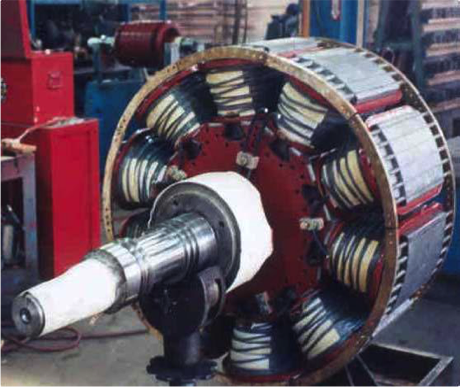
When the three-phase supply is given to the stator, the rotating magnetic field developed between the stator and rotor gap. The field having moving polarities is known as the rotating magnetic field. The rotating magnetic field develops only in the polyphase system. Because of the rotating magnetic field, the north and south poles develop on the stator.
The rotor is excited by the DC supply. The DC supply induces the north and south poles on the rotor. As the DC supply remains constant, the flux induces on the rotor remains the same. Thus, the flux has fixed polarity. The north pole develops on one end of the rotor, and the south pole develops on another end.
The AC is sinusoidal. The polarity of the wave changes in every half cycle, i.e. the wave remains positive in the first half cycle and becomes negative in the second half cycle. The positive and negative half cycle of the wave develops the north and south poles on the stator respectively. When the rotor and stator both have the same pole on the same side, they repel each other. If they have opposite poles, they attract each other.
Why Synchronous Motor is Not Self Starting ?
Above a certain size, synchronous motors are not self-starting motors. This property is due to the inertia of the rotor; it cannot instantly follow the rotation of the magnetic field of the stator. Once the rotor nears the synchronous speed, the field winding is excited, and the motor pulls into synchronization.
To get a clear idea about the question “why a synchronous motor is not self-starting?” consider a rotating magnetic field as equivalent to the physical rotation of two stator poles N1 and S1. Assume any instant like that two poles are in line with the stator magnetic axis [A-B]. At this instant, rotor poles are arbitrarily positioned. When DC supply is given to stationary rotor unlike poles will try to attract each other. Because of this action, the rotor will be subjected to an instantaneous torque in an anticlockwise direction. As we connected the power supply to the stator, the stator poles will rotate at speed of Ns rpm.
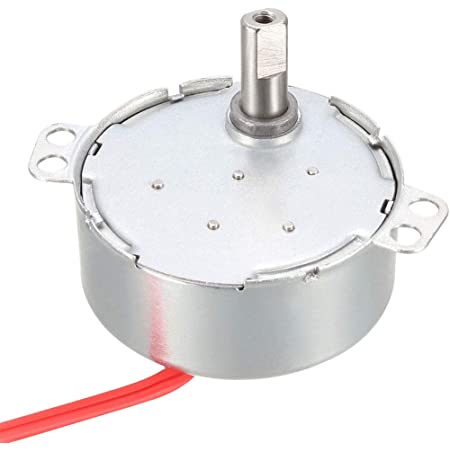
Due to the inertia of the rotor, it is unable to rotate in the direction of anticlockwise torque, to which is the driving force or stator rotating field. Just in that instant, the stator poles change their positions. Consider an instant half a period later where stator poles are exactly reversed but due to inertia rotor is unable to rotate from its initial position. At this instant, due to the unlike poles trying to attract each other, the rotor will be subjected to torque in the clockwise direction.
This will tend to rotate the rotor in the direction of the rotating magnetic field. But, before this happens stator poles again change their position reversing the direction of the torque exerted on the rotor. Hence the average torque on the rotor is zero. So, synchronous motor will not start itself.
Where Is Synchronous Motor Used?
Synchronous motors are typically employed in applications that need a precise and steady speed. Positioning machines are a common use for these low-power motors. They’re also employed as actuators in robots. Ball mills, timepieces, record players, and turntables all employ synchronous motors.
Can A Synchronous Motor Be Started with A Load On It?
Now the synchronous machine is acting as a burden on the dc machine, which is powered by the ac supply mains. The exciter installed on an overhung synchronous motor bracket and shaft extension may also start the synchronous motor.
Conclusion
In this article, we tried to give you all the essential information about why a synchronous motor is not self-starting. we brought the basic definition of what synchronous motor is and then we moved to the construction and the introduction of the component. The working principle of synchronous motors was the next. Finally, in the last, section we completely elaborated on why they are not self-starting.
If you have any experience of using synchronous motors and know more about them, we will be very glad to have your opinions in the comments on our website Linquip. Moreover, if you have any questions about this topic, you can sign up on our website and wait for our experts to answer your questions. Hope you enjoyed reading this article.
Download Why Synchronous Motor is Not Self Starting PDF
Buy Equipment or Ask for a Service
By using Linquip RFQ Service, you can expect to receive quotations from various suppliers across multiple industries and regions.
Click Here to Request a Quotation From Suppliers and Service Providers
Read More on Linquip
- Types of Synchronous Motors: A Full Description
- The Construction of Synchronous Motor: All the Necessary Details You want to Read About
- The Beginner’s Guide To Permanent Magnet Synchronous Motors
- Synchronous Motors: Definition, Working Principle, Types, and Applications
- A Full Explanation on Types of Servo Motors
- A Complete Guide to Repulsion Motor
- What is Speed Control of Induction Motor?
- The Simple Guide to Motor Efficiency: What It is and What to Do
- Compound DC Motors: Everything You Should Know About DC Compound Motors
- DC Motor Working Principles : The Most Compendious Reference

